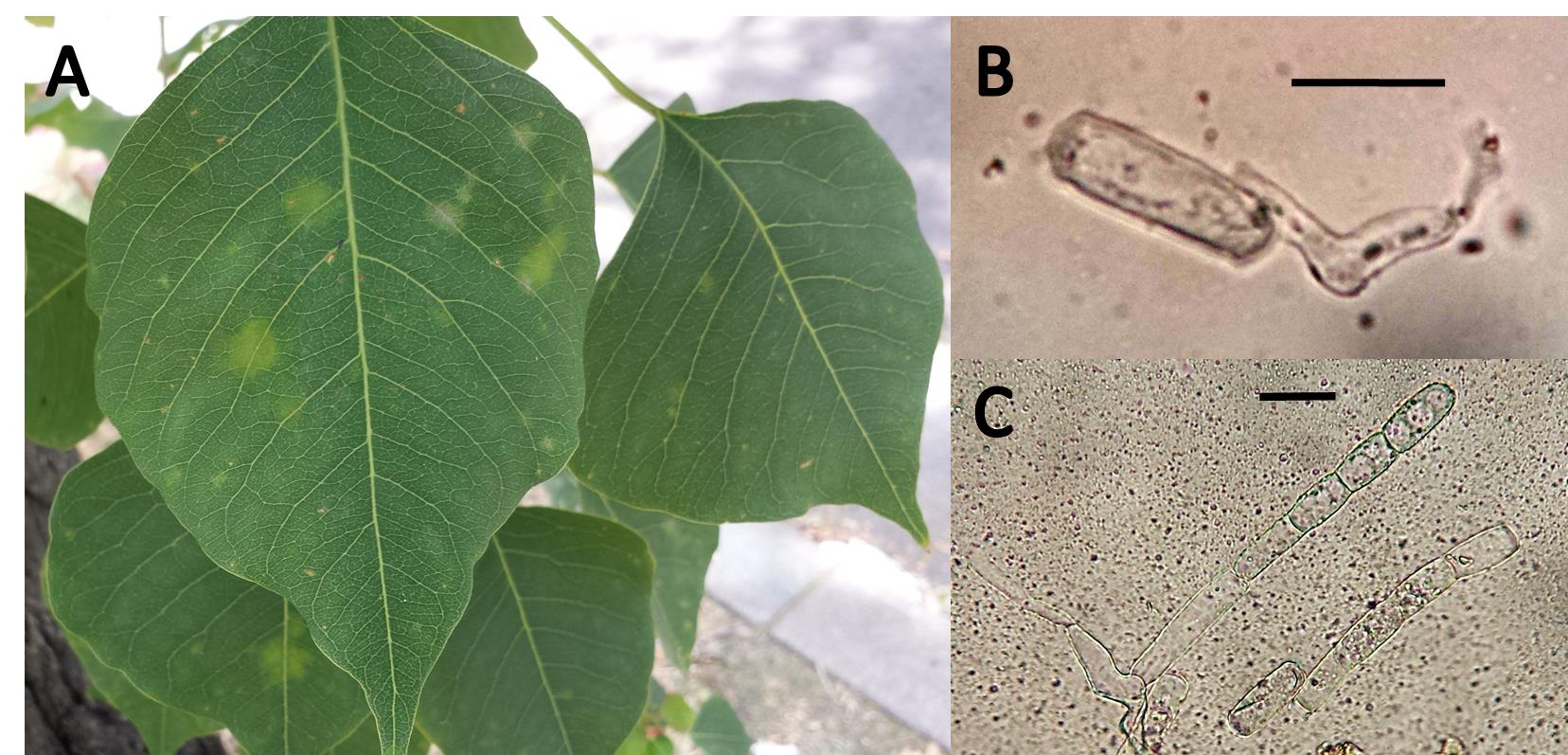First report of powdery mildew caused by Podosphaera sp. on Triadica sebifera in California

Abstract
Chinese Tallow trees (Triadica sebifera L.) were introduced to the United States in the 1700’s for its use in the soap industry (Stein and Flack 1996). It has since become an invasive species in the Southeastern US, displacing native species in wetland prairies and bottomland forests. In California, the tree is planted as an ornamental, and is often used as a street tree because of its shallow roots and colorful foliage. In June 2014, colonies of a powdery mildew species were observed on leaves and stems of Chinese tallow trees in Davis, California. Colonies were diffuse and appeared on both the abaxial and adaxial surface of younger leaves. Heavily affected leaves appeared distorted and chlorotic. Microscopic observation revealed ectophytic hyaline mycelia with catenulate spores. Conidia measured 25 to 42.5 x 10 to 17.5 um (n=55), with an average length to width ratio of 2.9, and had fibrosin bodies. Conidiophores measured 65 to 112.5 x 7.5 to 12.5 um (n=15). Conidia had lateral to sub-terminal germination and formed a short, unbranched germ tube approximately the same length as the conidia. Hyphal appressoria appeared as slightly nipple-shaped when formed on leaves. No chasmothecia were observed on infected leaves. Detached leaves from unaffected plants were gathered. Leaves were washed in 0.6% sodium hypochlorite solution for one minute, followed by a triple wash with distilled water for 30 seconds each. Ten leaves were artificially infected by gently rubbing infected leaves onto the wet leaf surface of detached leaves. Ten non-inoculated detached leaves were used as a control. The trial was repeated twice. All infected leaves showed signs of powdery mildew growth after 7 days, and control plants remained symptomless. The fungus present on the inoculated leaves was identical morphologically to that initially observed on diseased plants, fulfilling Koch’s postulates. DNA was extracted from conidia collected from affected leaves. Part of the internal transcribed spacer (ITS) region of rDNA of isolates WDG062014 was amplified with primers ITS1 and ITS4 (Takamatsu et al. 2001), and sequenced directly. The resulting 569-bp sequences were deposited in GenBank (Accession No. KX528023). There was a 99% identity match with several Podosphaera species sequences. Without chasmothecia or a type sequence, it is impossible to definitively identify our isolate to species. To our knowledge, this is the first report of powdery mildew caused by Podosphaera sp. on Chinese tallow tree in California. Powdery mildews of T. sebifera caused by Phyllactinia and Oidium species have been reported in Australia, Japan, and China, but not from North America (Farr and Rossman 2015).